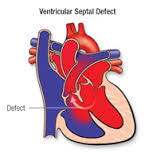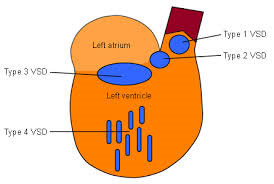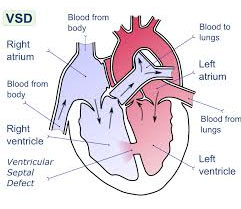A lot of babies in the world are born with a small ventricular septal defect. In many cases, the defect goes away on own with regular care from doctors. In some cases, however, there is a need of surgery which takes place in the first year of birth itself. More so, surgery is needed more in cases where the ventricular septal defect is large. With surgery, smaller ventricular septal defects are closed to avoid risk to heart values.


There are 5 different types of VSDs.
Let’s have a look at them:-
Type 1 (Subarterial) (Supracristal) (Conal septal defect) (Infundibular) – This type of VSD is found in 5-7% of patients. This defect is linked with the pulmonary valve, and is found mostly in Asians.
Type 2 (Perimembranous) (Paramembranous) (Conoventricular)- This form of VSD is considered the most common type with the number of patients going as far as 70%.
Type 3 (Inlet) (AV canal type) - Related with atrioventricular septal defect. This type is not common but found in some 5%.
Type 4 (Muscular) – this type of VSD is found in the muscular septum. It’s found in 20% and it can be further classified based on the location.
Type5 Gerbode (Left ventricular to right atrial communication) – This type of VSD is caused due to the absence of the Atrioventricular septum.
There are few specific sign and symptoms of ventriculaur spetal defects. These symptoms are often found in the early stage of a child’s life. No signs are visible at birth and sometimes it takes child to grow for the signs to become visible:-
Let’s have a look at them:-


Surgery is need to treat VSDs where the doctor would plug or patch the uncharacteristic opening between the ventricles. First of all, general anesthesia is given to the patient and then open-heart takes place. A heart-lung machine is used in the procedure and a cut is made in the chest.
Once the surgery ends, the hole is closed using patch or stitches. Even after surgery, patients are given regular medical care to keep close the VSDs. The visit to doctor would depend on the kind of defect and its intensity.